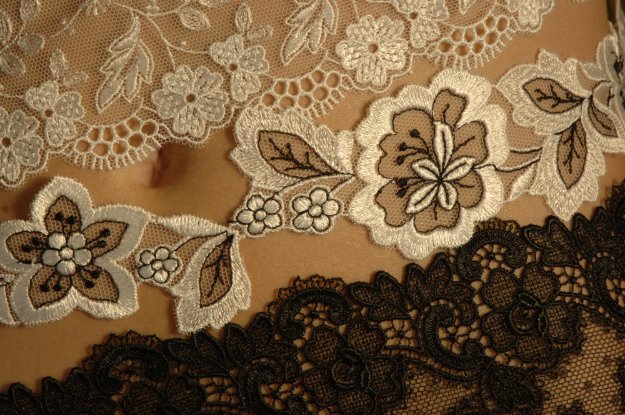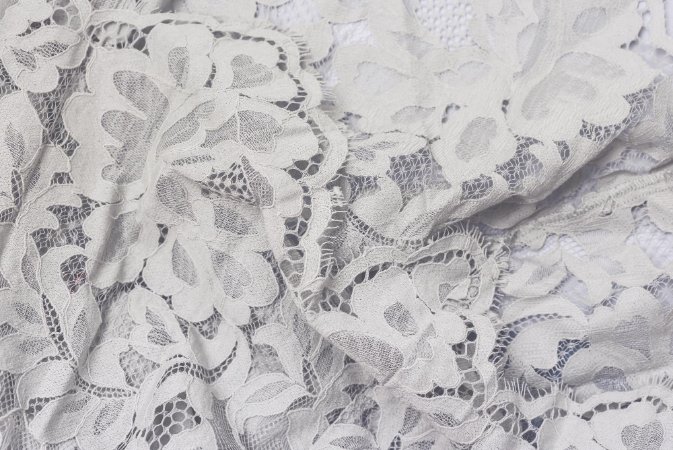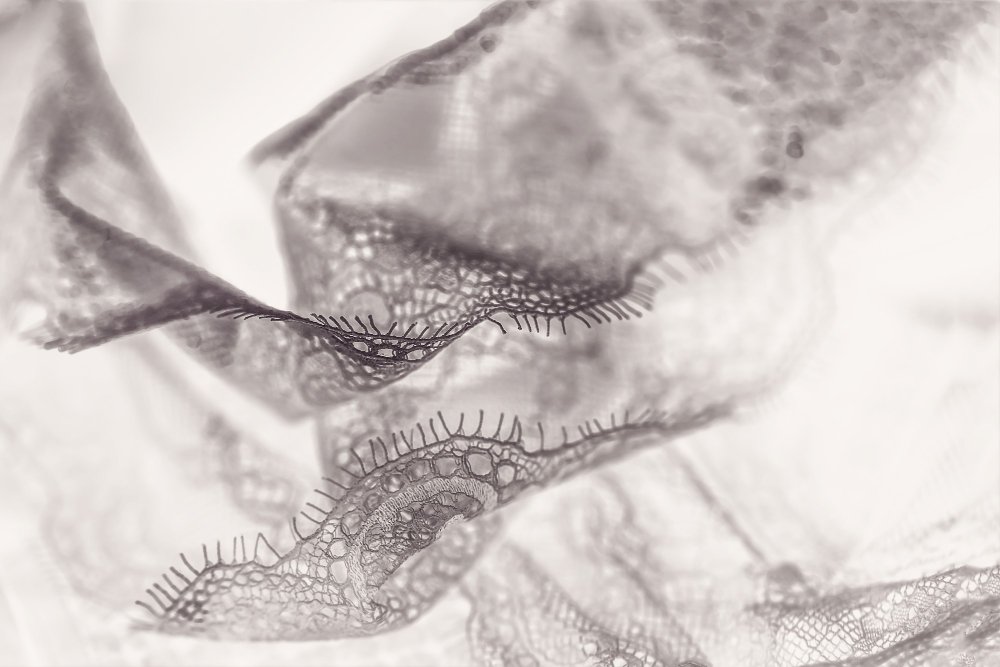Your comprehensive resource for mastering applique lace in fashion, crafts, and professional applications
Table of Contents
What is Applique Lace Fabric?
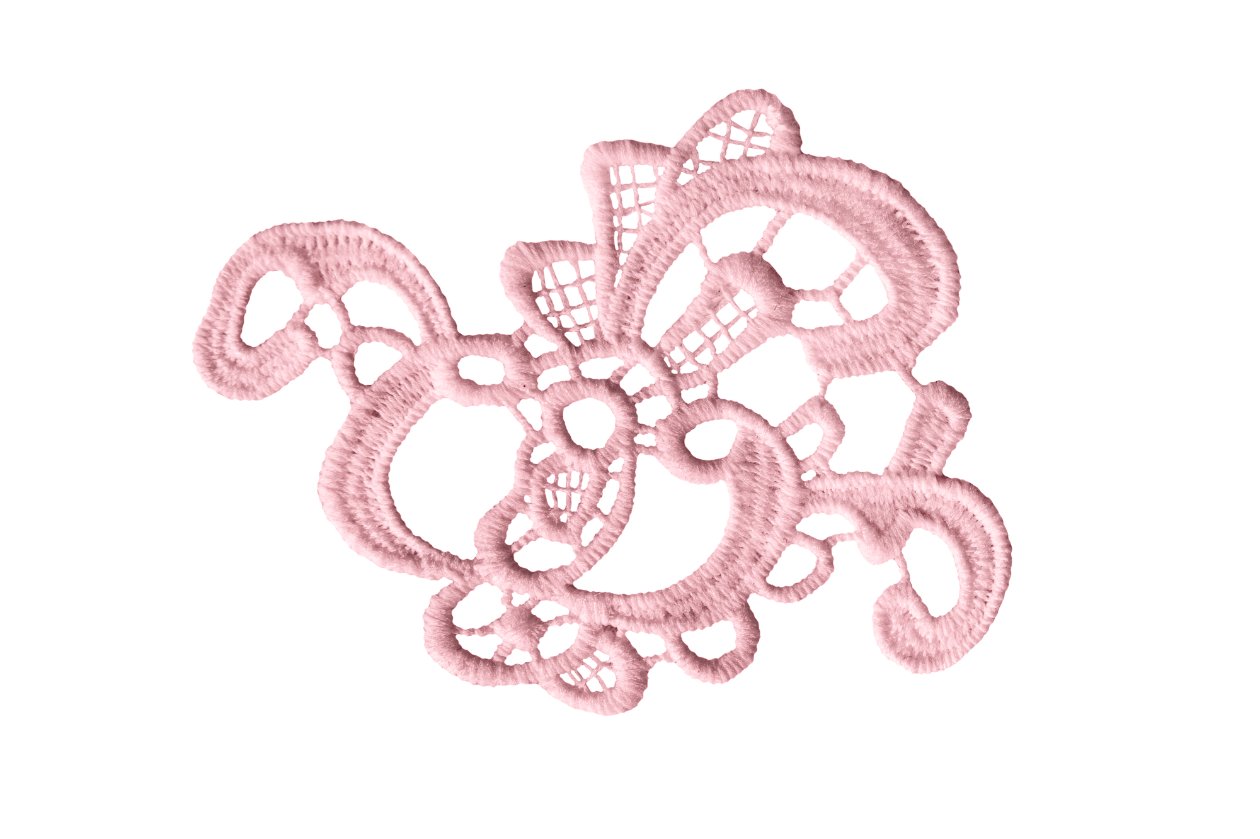
Applique lace fabric combines the delicate beauty of traditional lace with the practical functionality needed for modern design projects. Unlike standard lace that’s woven as a complete piece, applique lace features pre-cut decorative motifs attached to sheer backing materials like tulle or mesh.
Key Characteristics of Applique Lace
- Repositionable elements for easy design adjustments
- Heat-resistant synthetic bases for precise cutting with hot tools
- Three-dimensional texture without adding bulk to garments
- Transparent foundation that blends seamlessly with base fabrics
What is Appliqué Fabric?
Appliqué fabric refers to any material specifically designed to be attached to another fabric surface for decorative purposes. In the case of lace applique, this involves intricate embroidered or woven patterns that maintain their shape when cut and applied to garments or accessories.
Difference Between Embroidery and Appliqué
While both techniques add decorative elements to fabric, embroidery involves stitching directly onto the base material, creating flat designs. Appliqué, on the other hand, involves attaching separate fabric pieces to create raised, dimensional effects. Different stitches are used for each technique, with appliqué requiring specialized attachment methods.
Types of Applique Lace
Understanding different types of applique lace helps you choose the right material for your specific project needs. Each variety offers unique characteristics suited to different applications.
Chantilly Applique
Best for: Bridal wear, delicate overlays
Characteristics: Lightweight, fine patterns, scalloped edges
Applications: Chantilly lace works beautifully on sheer fabrics
Guipure Applique
Best for: Structured garments, bold statements
Characteristics: Heavy, raised patterns, no mesh background
Applications: Guipure lace suits dense fabrics like crepe
Corded Applique
Best for: Versatile applications
Characteristics: Raised cord outlines, durable construction
Applications: Works on both sheer and opaque fabrics
Beaded/Embellished
Best for: Evening wear, special occasions
Characteristics: Sequins, beads, rhinestones attached
Applications: Beaded varieties for glamorous effects
Materials and Backing Options
| Backing Material | Heat Resistance | Best Applications | Durability |
|---|---|---|---|
| Nylon Netting | High | Formal wear, bridal gowns | Excellent |
| Polyester Organza | Medium | Curtains, home décor | Good |
| Cotton Mesh | Low | Casual wear, children’s clothing | Moderate |
| Blended Mesh | Variable | Craft projects, costume making | Good |
2025 Applique Lace Trends
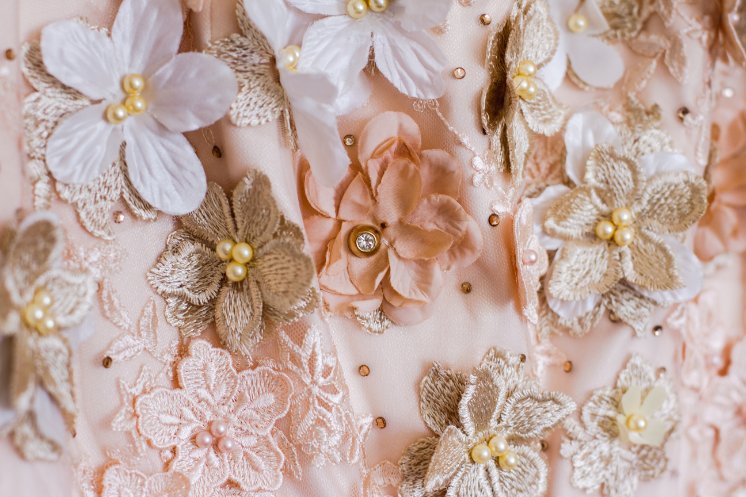
Top Trending Styles This Year
Fashion designers are embracing bold innovations in applique lace, moving beyond traditional applications to create striking contemporary looks.
3D Lace Appliqué Revolution
Three-dimensional lace appliqués featuring raised florals and botanical motifs are dominating runways and bridal collections. These pieces create dramatic texture without adding excessive weight to garments. The technique involves layering multiple lace elements to achieve depth and visual interest.
High-Contrast Design Applications
Black lace over nude or brightly colored base fabrics creates striking visual effects that are particularly popular in evening wear. This technique emphasizes the intricate patterns while providing dramatic color contrast.
Sustainable and Eco-Friendly Options
Modern crafters are increasingly choosing natural fiber appliqués and upcycled materials. Organic cotton lace and recycled polyester backing materials align with environmentally conscious fashion trends.
Minimalist Lace Applications
Simple, clean lace patterns are replacing heavily embroidered styles. These subtle applications work well with cotton fabrics for everyday wear, offering elegance without overwhelming the garment’s design.
Application Techniques & Methods
Successful applique lace application requires understanding different attachment methods and choosing the right technique for your specific project and skill level.
How to Attach Appliqué to Fabric
Preparation and Planning
Start by laying out your design on the base fabric. Pin appliqué pieces in place, working from the center outward. This prevents distortion and ensures balanced placement.
Temporary Attachment
Use fabric glue diluted 3:1 with water for temporary positioning. Apply with a small paintbrush, allowing each section to dry completely before proceeding.
Permanent Securing
Choose between hand sewing or machine attachment based on your project needs and available equipment.
Hand Sewing vs. Machine Application
| Method | Best For | Time Required | Skill Level | Finish Quality |
|---|---|---|---|---|
| Hand Sewing | Delicate pieces, beaded appliqués | High | Intermediate | Premium |
| Machine Sewing | Large areas, production work | Low | Beginner-Friendly | Professional |
How to Sew Lace Applique with a Sewing Machine
Machine application requires specific presser feet and techniques for best results:
- Use a zigzag or satin stitch with appropriate stitch settings
- Select proper needle type – ballpoint for knits, universal for wovens
- Adjust tension settings to prevent puckering
- Test on fabric scraps before working on final piece
- Maintain consistent speed for even stitch quality
Can You Glue Lace Applique?
Yes, but permanent fabric adhesives work best for temporary placement or non-wash items. For garments that require laundering, adhesive should only be used as a temporary measure before sewing.
The “Franken-Lace” Technique
This popular method combines different lace trims to create custom patterns:
- Stretch non-stretch netting in an embroidery hoop larger than your template
- Arrange complementary lace pieces following your design
- Secure with diluted fabric glue as described above
- Allow complete drying between layers
- Trim excess netting with heated cutting tools for clean edges
Creative Uses & Design Ideas
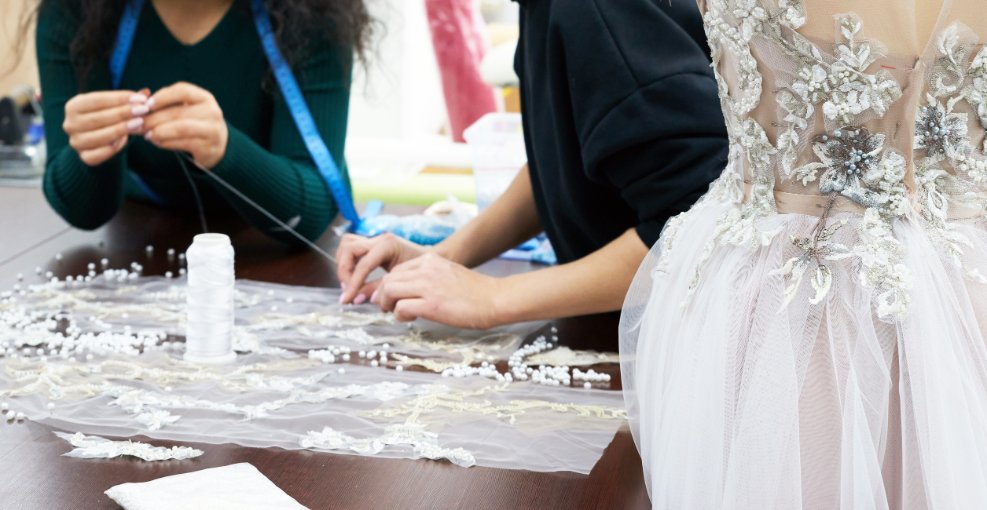
Applique lace transforms ordinary projects into extraordinary creations across fashion, crafts, and home décor applications.
Fashion Applications
Bridal and Formal Wear
Wedding gowns benefit from strategic lace placement that enhances the silhouette while adding romantic detail. Consider these applications:
- Bodice enhancement: Create structured support while maintaining delicate appearance
- Sleeve details: Add elegance to cap sleeves or create illusion necklines
- Train decoration: Extend patterns from bodice to create visual continuity
- Veil coordination: Match appliqué patterns for cohesive bridal look
Performance Costumes
Dance and skating costumes require durable applications that withstand intense movement. Use rhinestone clusters to follow natural design lines, and ensure proper weight distribution for balanced performance.
Everyday Fashion
Incorporate lace appliqués into casual wear for subtle elegance:
- Blouse yokes and sleeve details
- Denim jacket embellishments
- T-shirt neckline accents
- Cardigan edge treatments
Accessories and Beyond
Shoes and Handbags
Transform plain accessories with carefully placed lace appliqués. Use flexible adhesives for curved surfaces, and seal edges properly to prevent lifting during use.
Home Décor Applications
Extend your creative vision beyond clothing:
- Throw pillows: Add texture and visual interest to living spaces
- Table runners: Create elegant dining presentations
- Curtain panels: Filter light while maintaining privacy
- Lampshade accents: Create romantic lighting effects
Buying Guide for Quality Materials
Selecting high-quality applique lace ensures your projects achieve professional results and maintain their beauty over time.
Quality Indicators
Premium Quality
- Uniform thread thickness
- Clean, precise edges
- Consistent pattern clarity
- Colorfast dyes
- Heat-resistant construction
Budget Quality
- Variable thread quality
- Loose edge finishing
- Pattern inconsistencies
- Color bleeding potential
- Limited heat resistance
Shopping Guidelines
Physical Inspection Tips
- Hold against light: Check for uniform transparency and pattern clarity
- Test stretch properties: Quality lace should stretch less than 5% when pulled
- Examine edge finishing: Look for clean, sealed edges without loose threads
- Check bead attachment: Ensure embellishments are securely fastened
Project-Specific Selection
| Project Type | Recommended Lace | Backing Material | Adhesive Strength |
|---|---|---|---|
| Bridal Gowns | Alençon, Chantilly | Stiff tulle | Medium (GemTac) |
| Dance Costumes | Stretch mesh varieties | Stretch mesh | High (E6000) |
| Home Décor | Cotton or polyester | Non-woven base | Low (spray adhesive) |
| Children’s Wear | Cotton-based varieties | Soft mesh | Medium (washable) |
Budget Considerations
Applique lace pricing varies significantly based on construction method and materials. Handmade varieties command premium prices, while machine-made options offer excellent value for most applications. Consider total project costs, including backing materials, adhesives, and tools when budgeting.
Troubleshooting Common Problems
Even experienced crafters encounter challenges when working with applique lace. Understanding common issues and their solutions saves time and prevents project disasters.
Application Problems
Solutions:
- Reduce machine tension settings
- Use ballpoint needle for stretch fabrics
- Decrease stitching speed for better control
- Check our seam troubleshooting guide for detailed solutions
Solutions:
- Use heated cutting tools for synthetic laces
- Apply clear nail polish to cut edges as emergency seal
- Cut with sharp scissors in single, decisive cuts
- Leave ¼ inch seam allowance for proper grading
Solutions:
- Use less adhesive – thin, even coats work best
- Choose clear-drying adhesives specifically for fabrics
- Allow adhesive to become tacky before application
- Test on fabric scraps before final application
Design Issues
Pattern Alignment Problems
Misaligned patterns create unprofessional results. Always work from a center point outward, and use temporary basting stitches to check alignment before permanent attachment.
Color Matching Challenges
Dye lots can vary significantly between purchases. Order all materials simultaneously when possible, and keep detailed records of supplier information for future matching needs.
Maintenance and Repair
Lifting Edges
Prevent edge lifting by:
- Proper edge sealing during initial application
- Using appropriate adhesive strength for the application
- Avoiding excessive moisture exposure
- Regular maintenance checks on high-wear areas
Bead or Sequin Loss
Secure loose embellishments immediately to prevent further damage. Keep matching beads or sequins for repairs, and use appropriate thread weight for reattachment.
Care & Maintenance
Proper care extends the life of your applique lace projects and maintains their original beauty through years of use.
Cleaning Guidelines
Pre-Treatment Assessment
Evaluate the construction method, adhesives used, and embellishment types before choosing cleaning methods. Hand-sewn applications typically handle cleaning better than glued ones.
Hand Washing Technique
Fill a clean basin with cool water and add mild detergent designed for delicate fabrics. Gently submerge the item and allow soaking for 10-15 minutes without agitation.
Drying Process
Lay flat on clean white towels, reshaping gently while damp. Never wring or twist applique lace items, as this can damage both the lace and backing materials.
- Using fabric softeners (can weaken adhesives)
- Machine washing heavily beaded pieces
- Exposing to direct sunlight while drying
- Using bleach or harsh chemicals
Storage Best Practices
| Item Type | Storage Method | Environment | Special Considerations |
|---|---|---|---|
| Finished Garments | Padded hangers or flat storage | Cool, dry, dark | Use acid-free tissue paper |
| Loose Appliqués | Flat in boxes with dividers | Temperature controlled | Avoid crushing delicate areas |
| Work-in-Progress | Project boxes or portfolios | Clean, dust-free area | Label clearly with project details |
Professional Cleaning Considerations
For valuable items or heavily embellished pieces, professional cleaning may be worth the investment. Choose cleaners experienced with delicate fabrics and inform them about construction methods used.
Frequently Asked Questions
Expert Tips for Success
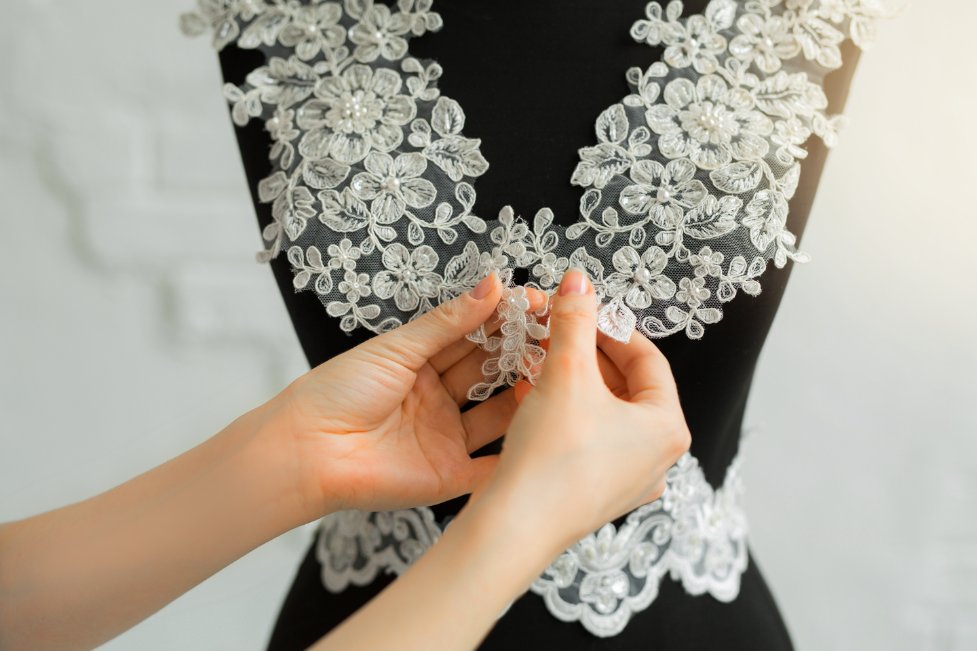
Professional Secrets
- Temperature Control: Always test heated cutting tools on scraps first – different synthetic materials melt at varying temperatures
- Grain Alignment: Match the appliqué grain direction with the base fabric for natural drape
- Pattern Scaling: Large motifs work best on flowing garments; small details suit structured pieces
- Color Theory: Use contrasting backing colors visible through open lace areas for dramatic effects
Building Your Skills
Progress from simple applications to complex techniques gradually. Start with basic cotton or polyester bases before advancing to delicate silks or complex stretch fabrics. Keep detailed project notes documenting successful techniques and material combinations.
Cost-Effective Approaches
Maximize your materials by:
- Purchasing coordinating lace types for mix-and-match versatility
- Buying slightly more than needed to allow for practice and mistakes
- Investing in quality tools that improve results and last longer
- Learning proper machine maintenance to ensure consistent performance
Conclusion
Applique lace fabric represents the perfect marriage of traditional craftsmanship and modern innovation, offering endless possibilities for creative expression across fashion, crafts, and home décor applications. As we’ve explored throughout this comprehensive guide, mastering applique lace techniques opens doors to professional-quality results whether you’re creating a once-in-a-lifetime wedding gown or adding elegant touches to everyday accessories.
The key to success lies in understanding the fundamental principles: choosing appropriate materials for your specific application, mastering both temporary and permanent attachment methods, and developing an eye for design balance and proportion. The 2025 trends toward 3D applications, sustainable materials, and minimalist aesthetics provide exciting opportunities to blend contemporary style with timeless elegance.
Essential Takeaways for Your Applique Lace Journey
- Material Selection Matters: Investment in quality backing materials and appropriate lace types directly impacts your project’s durability and professional appearance
- Technique Mastery: Whether hand-sewing delicate Chantilly applications or machine-applying bold Guipure elements, proper technique ensures lasting results
- Planning Prevents Problems: Careful layout, adequate preparation, and thorough testing on scraps save time and prevent costly mistakes
- Care Extends Life: Proper cleaning and storage techniques preserve your beautiful creations for years of enjoyment
- Practice Builds Confidence: Start with simple projects and gradually advance to more complex applications as your skills develop
Moving Forward
Remember that applique lace work combines technical precision with artistic vision. Each project teaches valuable lessons that improve your next creation. Don’t hesitate to experiment with the “Franken-lace” technique or explore innovative material combinations – some of the most stunning results come from creative risk-taking.
As you continue your applique lace journey, keep detailed records of successful techniques, material sources, and design inspirations. Build relationships with quality suppliers, maintain your tools properly, and never stop learning from other crafters and professionals in the field.
Whether you’re enhancing a simple blouse with delicate floral motifs, creating dramatic evening wear with bold 3D applications, or transforming your home with elegant lace accents, the skills and knowledge you’ve gained from this guide provide the foundation for endless creative possibilities. The world of applique lace awaits your unique artistic vision.
Additional Resources & References
For continued learning and professional development in textile arts and applique techniques, we recommend these authoritative resources:
- Fashion Institute of Technology – Textile Development and Marketing – Industry-leading education and research in textile innovation and sustainable practices
- Smithsonian National Museum of American History – Textile Collection – Comprehensive historical textile and costume preservation research
- International Textile and Apparel Association (ITAA) – Professional educational association advancing excellence in textile and apparel research
Continue exploring our comprehensive sewing guides and fabric trend reports to stay current with the latest techniques and materials in the ever-evolving world of fashion and crafts.

